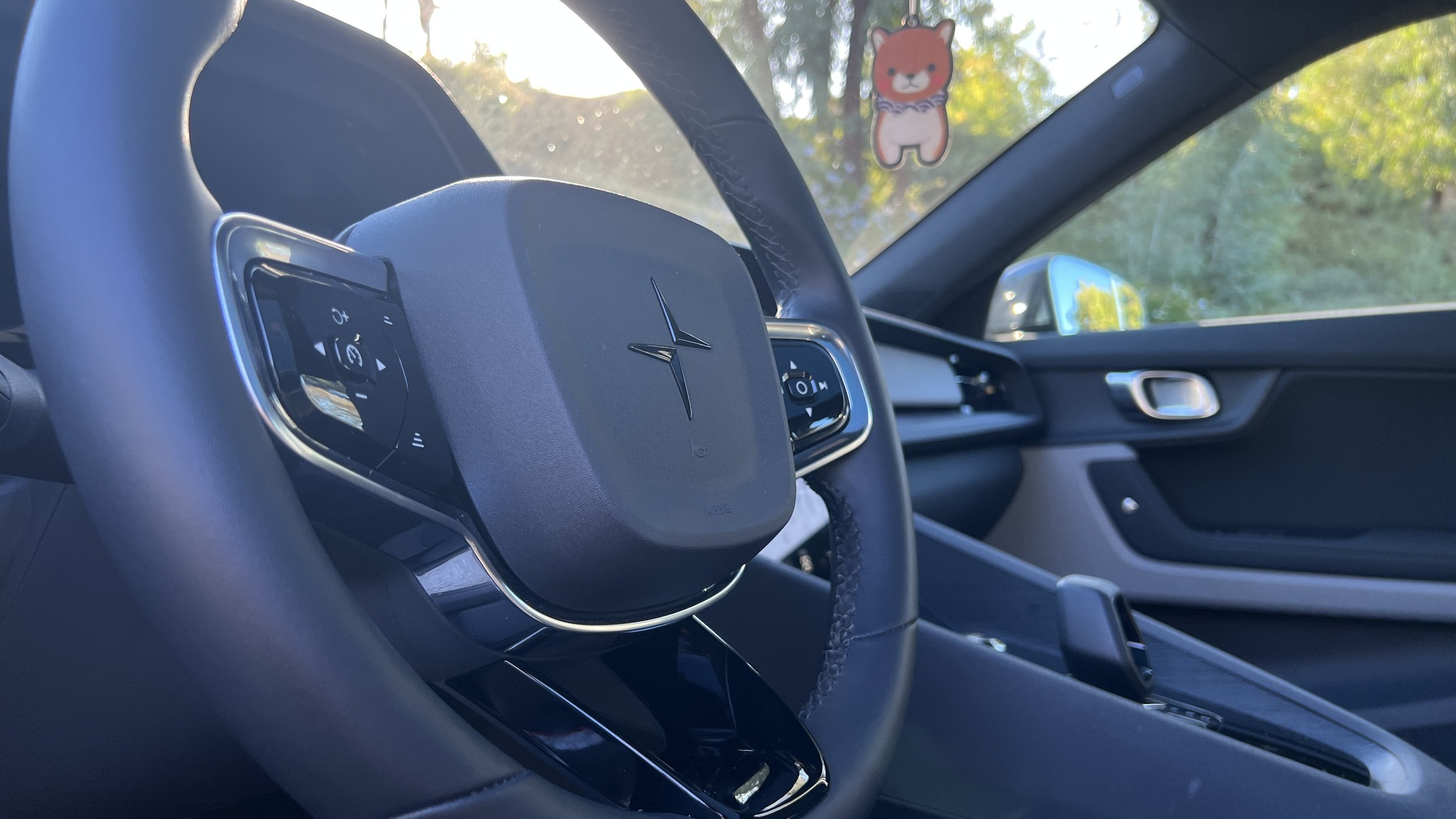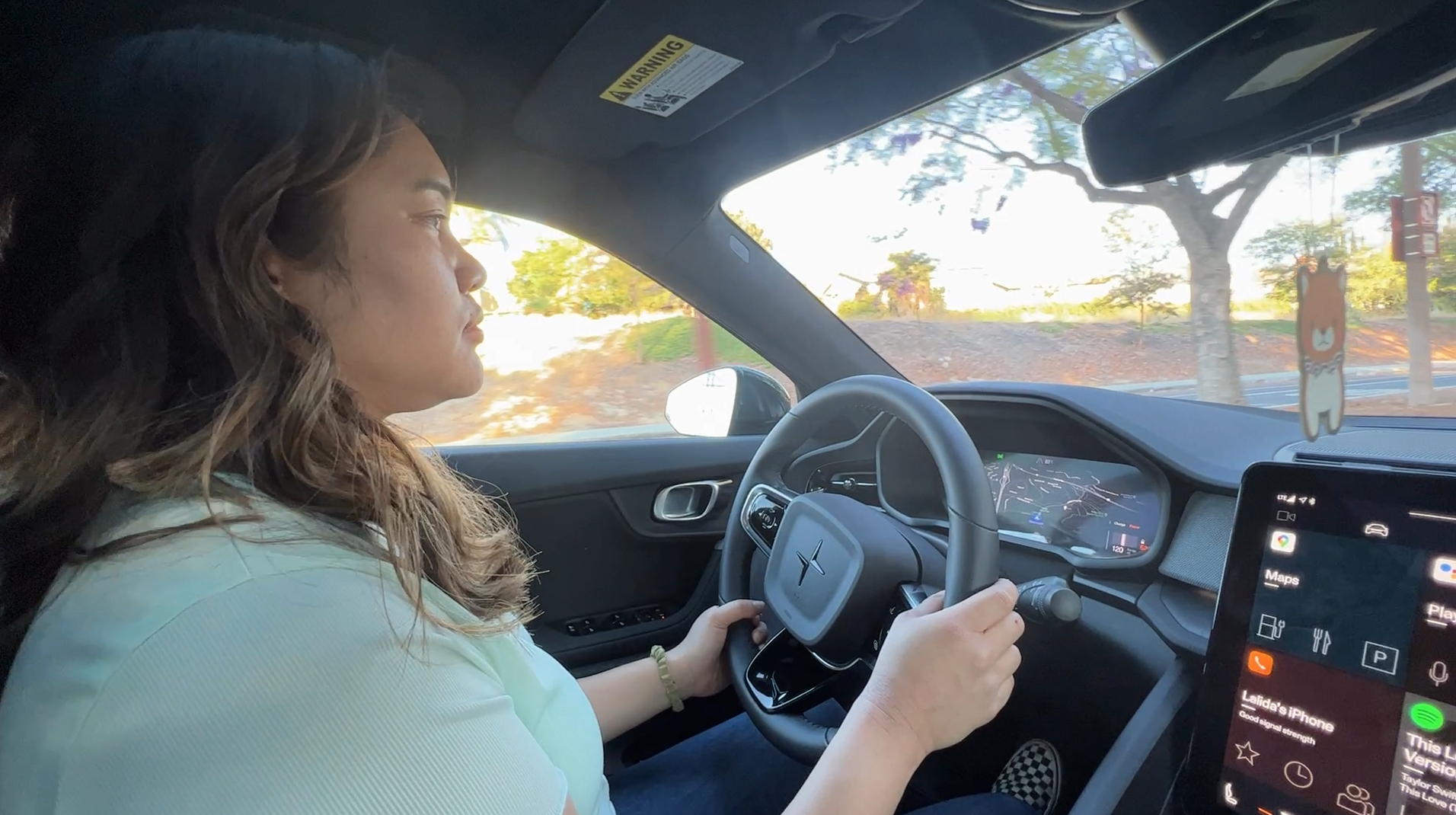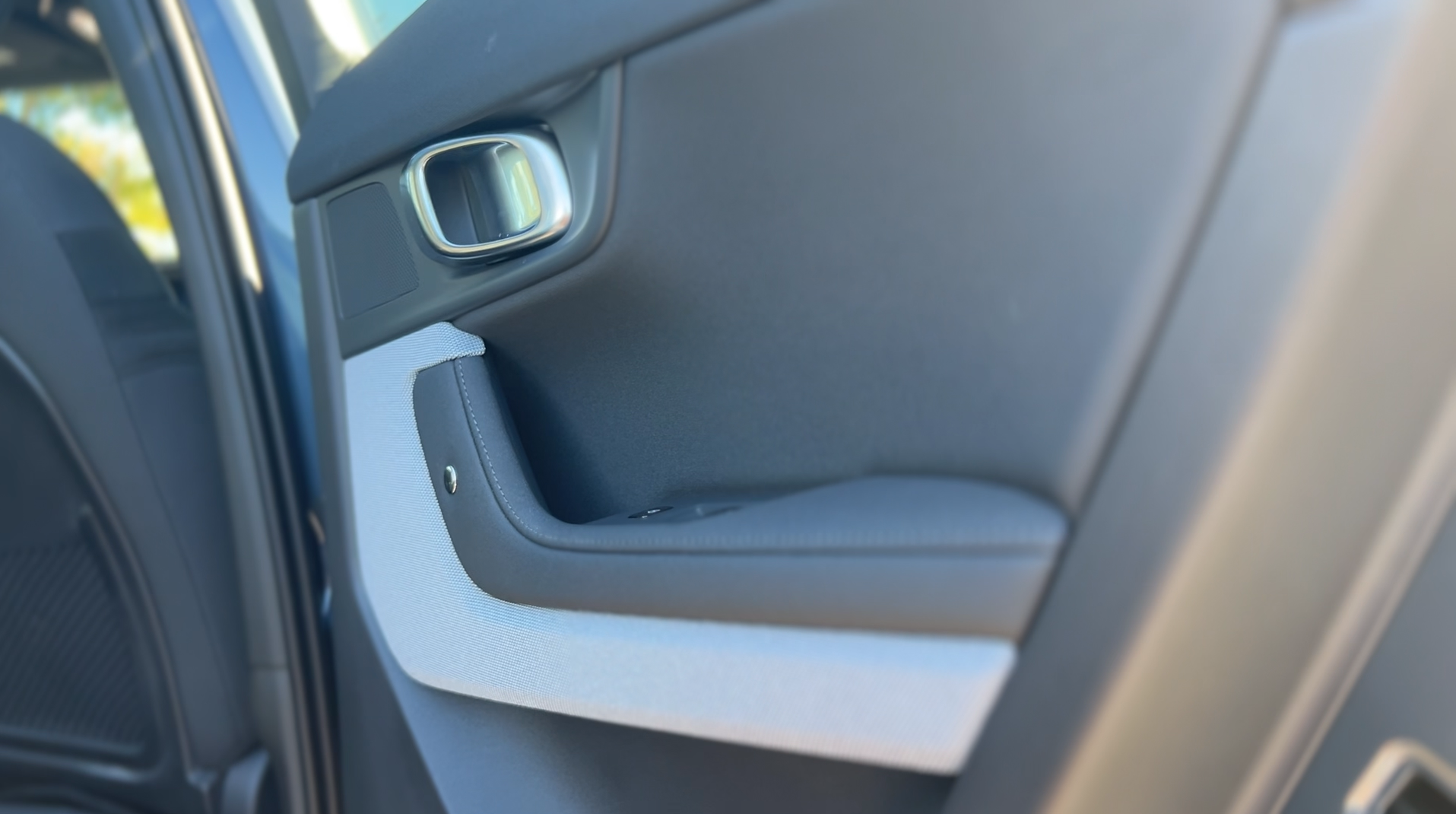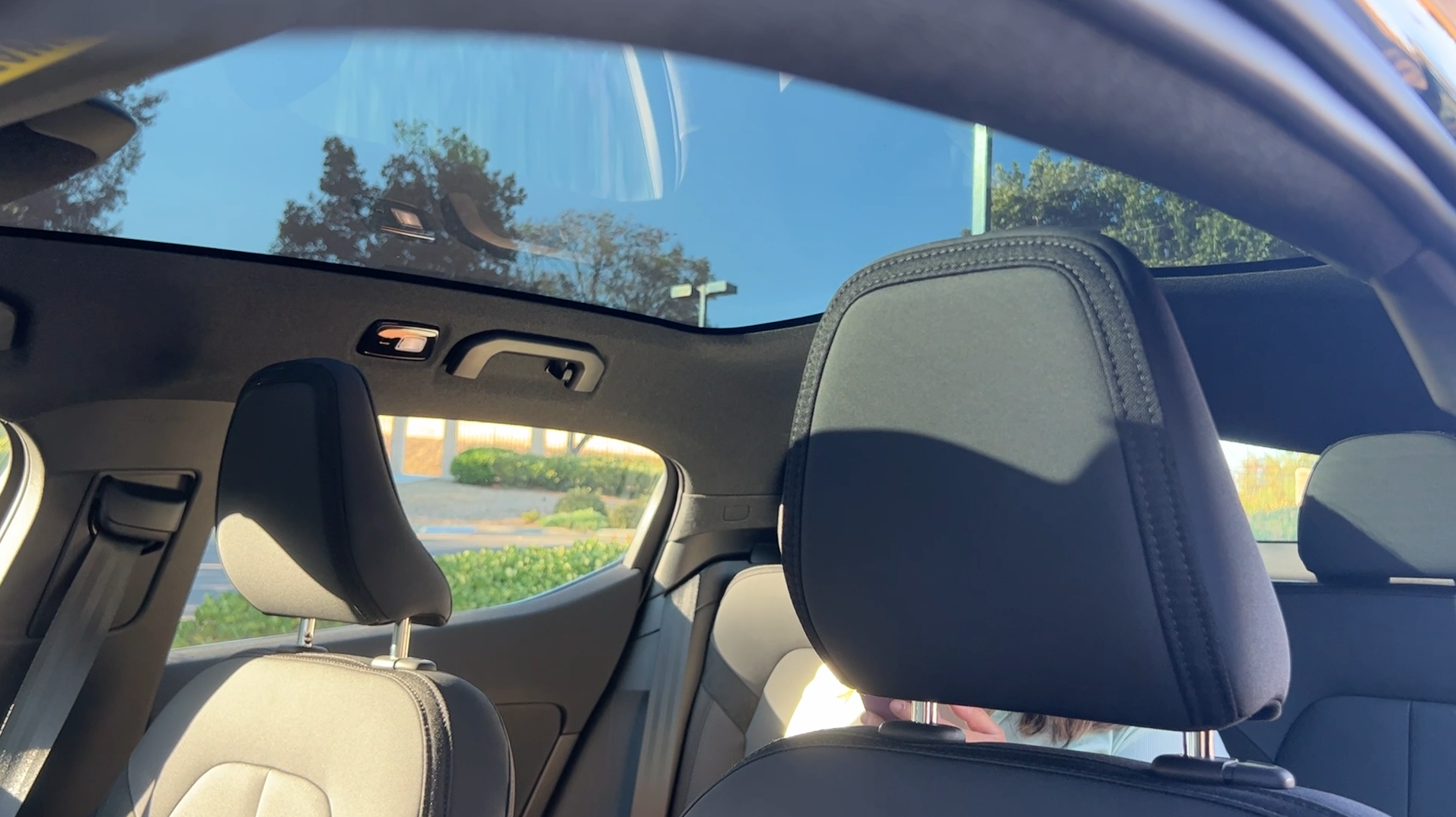Polestar 2 Review: 8 Months Later
Purchase Price: $62,150
Being a Polestar 2 owner is a mixture of gratifying pride and resounding regret. Mind you the car itself, in a vacuum, is an absolutely terrific vehicle worthy of consideration for just about any type of driver, but it just isn’t that straightforward to evaluate this product. It’s been half a year for us with our Dual Motor 2022 Polestar 2 in the Midnight color and I still find myself staring back at this wonderfully industrial design. Then I get into the cockpit, hit the road and can’t help but find myself wishing I was back behind the wheel of my Tesla Model 3. This isn’t going to be a Polestar vs. Tesla video (we’ll do that later), but being an owner of both does fundamentally have an effect on my perception of what not only a good electric car should be, but a car in general. That perception truly dictates where this review will be headed. If I never had a Tesla, the Polestar 2 would have been the best car I’ve ever owned. All of the negatives I’m about to document would have been much less of a factor if I never owned a Model 3. All of the positives would have been extensively more influential over my emotions for the Polestar 2 if I didn’t spend 3 years behind the wheel of a Tesla. Okay, no more mention of Tesla from here on out because that video has a lot of talking points that need to be discussed in its own right. This is the Polestar 2 review and it is one of the best electric vehicles you can buy right now.
It’s a Looker
There’s no other way to explain it; I absolutely love how the Polestar 2 looks on the outside. It’s a combination of futuristic simplicity and a prototypical classic compact executive car. From the minute the Polestar 2 appeared on my computer screen during its announcement debut in 2019, I was instantly attracted to the outer design. I find it ironic that Polestar gave the Polestar 2 a rather boxy roofline when the Volvo S60 (which I assume this car was based on) has a more aerodynamic sloped design seen on most sedans. I’m not complaining though as the PS2 has a perfect mix of familiarity and individualism. From some angles it looks like a dime a dozen BMW, while other angles will make just about anybody confused about what they’re looking at. I’ve been asked what car this is by curious strangers almost as much as when we first got our other EV last decade. By that metric, there is a fresh excitement behind owning the PS2 that I do enjoy from a rarity standpoint. I like driving a car that you don’t see every five cars on the freeway like some other EV brand now.
I also love the styling of the Thor headlights that was carried over from Volvo. Combine that with the rear U-shaped tail light bar and it’s an idealistic match. Polestar just gets how to make a professional looking vehicle.
Packages
Our configuration is the long range dual motor AWD model with 2 out of the 3 packs. We added the Plus pack mainly for the fixed panoramic sunroof, fully electrical front seats, and the heated steering wheel. The spacious, slightly tinted sunroof is beautiful to drive under. It deceptively enlarges the rather tight cabin space to remove fears of claustrophobia. I wouldn’t say from a passenger and driver perspective that the cabin space is spacious, but it appears much smaller without the sunroof and the natural light it lets in. For those who live in colder climates, the Plus package also includes a heat pump which I don’t necessarily capitalize much from here in Southern California. Overall, for a $4,200 package, I do find those features and the others I didn’t mention in the Plus package to be worth the price to enhance the driving experience.
The Pilot package on the other hand is an additional $3,400 and it combines things like the 360° camera, Pixel LED headlights, Pilot Assist adaptive cruise control, and a few other safety features. I’ve used adaptive cruise control systems for my daily commute to work for over 3 years now and it is an essential function to a car experience for me. I can earnestly say that Polestar’s Pilot Assist is substantially behind many of their EV competitors.
Enabling and disabling the assist features are all located on the right hand side of the steering wheel. Controlling the speed and distance is actually pretty well incorporated for drivers to use. I find it much easier than how Kia and Hyundai designate activation and control for their adaptive cruise control. Where Polestar falls significantly behind is in the lane centering department. I won’t go into detail in this review as I promised not to mention the company owned by the future owner of Twitter (as of writing) again, but the difference in my adaptive cruise control experience between my two EV’s on the same freeway commute is night and day. The Polestar 2 struggles with the slightest deviation from a straight trajectory. The car bounces between the left and the right lane lines way more frequently than I’d find acceptable. It’s gotten to be such a deterring experience that Lida refuses to even use Pilot Assist at all anymore.
This is a segment I wanted to feature heavily in my Polestar 2 vs. Model 3 video so make sure you check that out if having the car drive for you is an important feature you want. I wouldn’t say potential buyers should completely overlook and skip the $3,400 Pilot package, as the 360° camera is a terrific parking companion. Also, the added safety features are extremely beneficial as it contributes to the Polestar 2 being named one of the safest vehicles ever made according to the Euro NCAP. Just don’t go into purchasing this car expecting it to be better than Blue Cruise or Autopilot when it comes to having a pleasant driving assistance experience. To many drivers, this will mean absolutely nothing to them as manual control of a vehicle is what they live to drive. For drivers like me who just want to get from point A to point B with the least amount of stress and hassle, then a reliable adaptive cruise control system is essential to the vehicle.
How It Drives
Finishing off some of the remaining specs, our model has an EPA estimate of 260 miles and a 0-60 mph of 4.5 seconds. We kept the wheels at the standard 19” 5-double spoke diamond cut. That’s an MSRP of $62,150 before tax. While that’s a lofty price for a vehicle, if you factor in the Federal Tax Credit (as of writing) and potential State Credit (as of writing), our configuration is somewhere in the mid-$50k. We essentially have the top of the line model that Polestar offers as we’re just missing the Performance Package which was another $5,500 for a 0.3 second improvement in acceleration. A majority of people won’t be able to tell the difference as the Polestar 2 AWD is already a ridiculously speedy car. Even the new single motor FWD variant at 7 seconds flat is a quick car thanks to the instant torque that electric vehicles can operate with. You won’t have any problems during those pesky merging situations on the freeway or sticky situations that time spent on an upshift could cause a potential collision. We’ve all been in situations like that on the road.
I found the PS2 to drive exceedingly stable on the road. It steers moderately stiff on sharp turns, resulting in less body roll, and for a more leveled transition. I would even describe the car as driving a bit bulky for its car size. I do feel exceptionally in control of the car in every scenario on the road that I’ve encountered. I can’t necessarily say the same about every car I’ve owned in my life and many of them were in the luxury segment. The one major complaint I have with the driving experience is the limited rear window visibility. It’s narrow to the point where it doesn’t make sense from an ergonomic standpoint. The PS2’s rear visibility is encroaching on coupe levels of tightness. For a sedan this large, it’s rather odd to see the designers sacrifice so much rear visibility. However, changing lanes is manageable thanks to spacious side mirrors and a well implemented blind spot collision warning system. Some systems on cars try to hide the notifying light to make it as small as possible. Polestar takes the opposite approach and I appreciate how helpful it is here. When backing up, I almost strictly look at the rear camera and 360° camera instead of through the back window. I found the picture quality to be lacking in definition, especially when you consider the price tag of this car, but they do the job well enough to assist you.
A Luxury Basic Interior
Speaking of that tight rear view, the rear seats give off a homey vibe. I’m 5’8 and I do have enough head room to comfortably sit for a long period of time. Leg room is also pretty gracious on the PS2. Unfortunately, the PS2 isn’t an EV specific platform so it does retain a tunnel that impedes leg room for the middle seat. I would say you could fit two adults perfectly fine, with three adults suitable for travel under an hour. It’s a solid space for passengers. The front two seats are where the luxury part of this car kicks in. Both the driver and front passenger seats are power controlled. Polestar goes a step further and allows you to extend the seat length out for added thigh support. I’ve been seeing this a bit more lately on vehicles, but up until this point, I’ve never had this luxury on any of my cars. That’s terrific for your seating posture on longer rides stuck in traffic.
Now while the seats are comfortable to sit in, I have neutral feelings towards the seat materials Polestar chose to initiate as their new wave of sustainable development. It’s a vegan fabric sourced by WeaveTech that is essentially a vegan cloth compiled really nicely together. You can see quality behind the assembly of the interior through the stitching and alignment of parts. There’s very little that screams cheap material in the cabin of the Polestar 2 except for bits of hard plastic around the door and the glossy piano black that inhabits the center console. Luckily the icky piano black is only isolated in that area and also just a little bit of real estate on the steering wheel.
I found that the center console is a huge trap for dust and dirt in the car. It’s basically a cove that rounds in for dust to fall into. While the dark wood accent on our model adds to that luxury mystique, its contribution is more negative than positive from a functionality standpoint. I think the cabin is fine overall, but the center console could have been designed much more thoughtfully. In many ways, the center console feels like a barrier or a blockade for the front passenger to keep away from the driver. It adds absolutely no storage value, nor does it even provide the simplest amenity of useful cupholders. There’s one exposed cupholder that is slightly behind the reach of the driver. The second cupholder is hidden inside a small storage console. You either use it as an awkward second cupholder where you have to open the lid up to rest a drink, or you remove the cupholder and use it as a small storage space. It’s one or the other with no in-between.
The other storage spots on the center console reside on the sides. They’re narrow pockets that are slightly smaller than those found on the doors. You’ll have to store most of your essentials in the glovebox, which fortunately has decent depth behind it. I just feel that the center console on the PS2 has no direction in aesthetic or functional usage. This is especially so when you take a look at many of the new EV’s that feel so open concept like the Hyundai Ioniq 5.
The Tech
The major selling point for us was the fact that Polestar chose to license Google’s Android Automotive as the car’s infotainment system. Instead of relying on Volvo’s archaic UI software, they took a plunge and committed to adapting the industry towards a modern future. If you think about it, just about every piece of technology in our lives have modernized and simplified their UI functionality to match what our smartphones began in the 2010’s. Even our homes have evolved to the point of such a simple form of interaction. The one industry that has been stuck for 20 years with the same old software style is the car industry. If you look at the core manners of what MBUX, iDrive, or MMI Touch operate in from these historically successful legacy carmakers, not much has changed from a 2010 car to a 2020 one. The core design of their UI’s now are essentially the same bones as their cars in 2015. While Android Automotive has a lot of growth required to be competitive with Tesla one day, it has the makings of a fine infotainment system simply because it seeks to redefine how drivers interact with their car. Displaying on a 11.15-inch (283 mm) center display, Google has separated the functionality they think you’ll need into four quadrants. Think of it as kid or senior citizen mode on an iPhone. The icons are enlarged and simplified for you to hit what you need.
There’s an official Google Play Store installed on the car for drivers to download some apps that they may want to use. There isn’t a lot at the moment, but we have seen new ones added during our time as owners of the car. Spotify and other audio streaming apps, as well as maps and charging locaters are basically all you’ll be looking to download in this Play Store version. There’s a lot of potential here for Polestar to match Tesla in terms of entertainment factor as Google is already involved with the car. While you can’t officially download the Youtube app, an official web browser was added to the app store that does allow you to use it with visual media platforms. I’m hoping we will see a wider variety of apps added in the near future.
I also love having a digital driver display that actually displays a full iteration of Google Maps right in front of me. This is one of my favorite digital driver displays that I’ve recently seen on a car due to the sheer minimal amount of information displayed here. Polestar keeps it at the absolute essentials with only speed, speed limit, relative vehicle information, a map, and battery information populating this screen. That’s it. You can’t over customize it or change the color and background. It’s organized in such a pleasant and simple to view manner that I just feel comfortable behind it.
Power Trunk
When we were in our decision making process, one of the major selling points was the power hatchback trunk. After not having this feature for three years (after moving from the BMW X3 to Tesla Model 3), the one on the PS2 feels like a huge jump in technology (which it really isn’t). There’s also the kick to open feature which I haven’t had on a car before. The trunk measures in at 14.3 ft³ of space for plenty of storage. Unlike the center console inside the car, the trunk space is extremely well designed to maximize utility. There are pockets and dividers all throughout the trunk space that is terrific for keeping shopping bags propped up. Volvo and by extension, Polestar, have been leaders in the trunk organization field over the last half decade. They really get what consumers want in a trunk space.
What About The Battery?
Now finally, we get to the section where we discuss charging. With a 78 kWh 400 V lithium-ion battery powering the EV, the Polestar 2 isn’t necessarily the most competitive car when it comes to range. That 260 mile range I mentioned earlier is more like 220 to 240-ish miles at 90% with actual normal human driving conditions. This is plenty enough for our daily commutes here in California even with crazy traffic. We leave the car’s climate control on while we’re out with the dogs for a make-shift “Dog Mode” without much concern. The car’s system does turn off when it senses that the driver has left the seat, but it can easily be turned on again by a passenger. Stuff like this makes the Polestar slightly less convenient if you are used to a car that spoils you. While the PS2 does have the capability to charge at up to a maximum of 150 kW at a DC fast charger, when you charge the car at home with a lvl 2 charger, the typical 8 hours at 220V for a full charge is about right from our daily averages. Polestar provides buyers with an included mobile J1772 charging cable that is rather bulky and not very portable. As normal practice with most EV purchases, you get a NEMA 14-50 plug as well as a standard wall outlet plug to switch between. We’ve been taking the car to Electrify America stations where we’ve hit an average of 133 kW charge thanks to the free 30 minute Polestar 2 plan you get when you buy the car. EA has a lot of issues, but I do have hopes that the infrastructure will improve more quickly than one may think. The fragmented non-Supercharger networks is what holds great cars like the Polestar 2 back from being transcendent to general consumers. With Superchargers opening to cars like the PS2 in the near future, theirs a lot of growth from a owner perspective to look forward to. That’s very exciting.
The Best EV On The Market?
EV’s are here and this time around, they aren’t going anywhere. Companies like Polestar really make it feel as if a barrier has been broken down and the electric platform isn’t just a niche anymore. The Polestar 2 is an absolutely top-end electric car that is in a category only shared by Tesla. There aren’t many electric sedans, not to mention luxury electric sedans on the market in the USA for $40-60k. I do consider the PS2 to be rather affordable for a luxury car, even after considering the move past the single-motor price into the dual-motor configuration we reviewed here. I do feel like I got what I paid for and when you make a purchase of this sum, that is an important mental component to find yourself satisfied with.
The PS2 has instant torque and feels quicker than luxury ICE competition in this price segment. It isn’t the perfect car yet, but I am very encouraged by the improvements the company seems to be committed to through OTA. That is a strategy for a product I can get behind in 2022 that doesn’t really exist in the ICE market nor is properly utilized by legacy car makers for their electric vehicles.
So ultimately, is the Polestar 2 right for everyone? Of course not. However, I do find the car to be extremely competitive in a space that is dominated by BMW and Mercedes in the ICE segment. With Polestar now having a head start after two calendar iterations (now going on 3) in the electric space, if I was a buyer at this time, I would be more confident in a purchase of the PS2 over something like the Mercedes EQE or a BMW i4. I personally find a lot more value in Google’s Android Automotive than in a lot of legacy car maker’s UI software. Polestar definitely has not received the amount of mainstream credit they deserve for the PS2, but I for one, am looking forward to seeing where the company goes forward from here with this amazing car.




















Alex
With nearly a decade under his belt running his video production team, and countless hours traveling the country to report on pop culture events during his tenure as a contributor for AXS Examiner, Alex has relied on a lot of gadgets over the years. That still hasn’t satiated his need to get his hands on the newest and greatest the world has to offer!